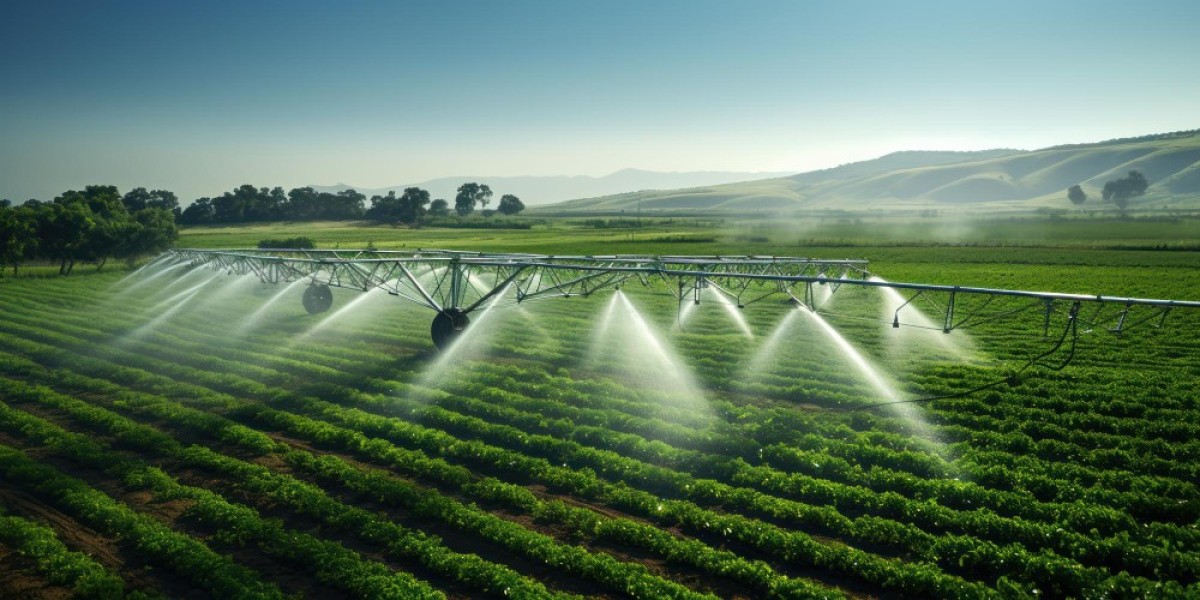Agriculture is the backbone of India’s economy, employing nearly half of the country's workforce and contributing significantly to its GDP. The sector's performance is influenced by a myriad of factors that determine the productivity, sustainability, and profitability of agricultural activities. Understanding these factors is crucial for policymakers, farmers, and stakeholders who aim to enhance agricultural output and ensure food security. This blog explores the key factor influencing agriculture in India, providing a comprehensive understanding of their impact.
Climate and Weather Conditions
Temperature and Rainfall
Climate and weather conditions are primary factors affecting agriculture in India. The country experiences diverse climatic conditions, ranging from tropical in the south to temperate in the north. Temperature and rainfall patterns significantly influence the types of crops that can be grown in different regions.
India's monsoon season, which typically lasts from June to September, is crucial for agriculture as it provides the majority of the annual rainfall. However, the monsoon can be unpredictable, with variations in onset, duration, and intensity. Excessive rainfall can lead to flooding and crop damage, while insufficient rainfall can result in droughts and reduced yields. Farmers rely heavily on accurate weather forecasts and timely monsoon rains to plan their sowing and harvesting activities as it is one of the major factors influencing agriculture.
Soil Quality and Types
Fertility and Composition
Soil quality is another critical factors of agriculture in india that influences agricultural productivity. India has a wide variety of soil types, including alluvial, black, red, and laterite soils, each with distinct characteristics and fertility levels. Alluvial soils, found in the Indo-Gangetic plains, are highly fertile and support the cultivation of cereals, pulses, and vegetables. Black soils, also known as regur soils, are ideal for cotton cultivation due to their moisture-retentive properties.
Soil fertility depends on factors such as organic matter content, pH levels, and the presence of essential nutrients like nitrogen, phosphorus, and potassium. Soil degradation, caused by erosion, salinization, and nutrient depletion, poses a significant challenge to sustainable agriculture. Farmers often employ soil testing and adopt practices like crop rotation, organic farming, and the use of biofertilizers to maintain soil health and productivity.
Water Resources and Irrigation
Availability and Management
Water is one of the critical factors of agriculture in India, and its availability and management significantly impact agricultural output. India has vast water resources, including rivers, lakes, and groundwater, but their distribution is uneven. While some regions have abundant water supply, others face severe water scarcity.
Irrigation infrastructure plays a vital role in ensuring water availability for agriculture. The major irrigation methods in India include canal irrigation, well and tube well irrigation, and micro-irrigation techniques like drip and sprinkler systems. Efficient water management practices, such as rainwater harvesting and watershed management, are essential to address water scarcity and optimize water use. Government initiatives like the Pradhan Mantri Krishi Sinchayee Yojana (PMKSY) aim to improve irrigation facilities and promote sustainable water management practices among farmers.
Agricultural Practices and Technology
Traditional and Modern Methods
The choice of agricultural practices and the adoption of technology significantly influence crop yields and productivity. Traditional farming methods, which rely on manual labor and simple tools, are still prevalent in many parts of India. However, modern agricultural practices and technologies have the potential to revolutionize farming by increasing efficiency and output.
Mechanization, involving the use of tractors, harvesters, and other machinery, can significantly reduce labor requirements and enhance productivity. Precision agriculture, which uses GPS technology, sensors, and data analytics, allows farmers to optimize input use and monitor crop health in real time. Additionally, biotechnology and genetic engineering have led to the development of high-yielding and pest-resistant crop varieties, further boosting agricultural productivity. The government and private sector play a crucial role in promoting the adoption of modern technologies through subsidies, training programs, and research initiatives.
Government Policies and Support
Subsidies and Schemes
Government policies and support mechanisms are vital for the development, factors of agriculture in india and sustainability of agriculture in India. The government implements various schemes and programs to support farmers, enhance productivity, and ensure food security. These initiatives include subsidies on fertilizers, seeds, and machinery, as well as financial support through crop insurance and credit schemes.
The Minimum Support Price (MSP) system, where the government guarantees a fixed price for certain crops, aims to protect farmers from market fluctuations and ensure a stable income. Additionally, programs like the Pradhan Mantri Fasal Bima Yojana (PMFBY) provide crop insurance to mitigate the risks associated with crop failure due to natural calamities. The government also focuses on infrastructure development, such as building rural roads, warehouses, and cold storage facilities, to improve market access and reduce post-harvest losses.
Market Access and Prices
Supply Chain and Distribution
Market access and price stability are crucial factors that determine the profitability of agricultural activities. Farmers need efficient supply chains and distribution networks to transport their produce to markets. Inadequate infrastructure, such as poor road connectivity and lack of storage facilities, can lead to post-harvest losses and reduced income for farmers.
The fluctuation of market prices for agricultural commodities can also impact farmers' income. Price volatility is influenced by factors such as demand and supply dynamics, international trade policies, and market speculation. Farmers often face challenges in accessing fair prices for their produce due to middlemen and lack of market information. Government initiatives like e-NAM (National Agriculture Market) aim to create a unified national market by linking existing APMC (Agricultural Produce Market Committee) markets and promoting transparency in price discovery.
Labor Availability and Migration
Workforce Dynamics
Labor availability is a significant factor influencing agriculture, particularly in regions that rely heavily on manual labor. The agricultural sector faces challenges related to labor shortages, especially during peak seasons like sowing and harvesting. Migration of rural labor to urban areas in search of better employment opportunities exacerbates this issue.
Mechanization and the adoption of labor-saving technologies can help address labor shortages and improve productivity. However, the transition to mechanized farming requires investment and training. Additionally, social and economic factors, such as labor wages, working conditions, and access to social security, play a crucial role in shaping the agricultural labor market.
Natural Disasters and Climate Change
Risks and Adaptation
Natural disasters, such as floods, droughts, cyclones, and pest infestations, pose significant risks to agriculture. These events can lead to crop damage, loss of livestock, and reduced agricultural output, impacting farmers' livelihoods and food security.
Climate change is exacerbating the frequency and intensity of natural disasters, making agriculture more vulnerable. Rising temperatures, changing rainfall patterns, and increased incidence of extreme weather events affect crop yields and water availability. Adaptation strategies, such as developing climate-resilient crop varieties, implementing sustainable agricultural practices, and improving disaster preparedness, are essential to mitigate the impact of climate change on agriculture.
Access to Credit and Financing
Financial Inclusion
Access to credit and financing is crucial for farmers to invest in agricultural inputs, technology, and infrastructure. Many small and marginal farmers face challenges in accessing formal credit due to lack of collateral, high-interest rates, and complex application processes. As a result, they often rely on informal sources of credit, which can be exploitative.
Government initiatives like the Kisan Credit Card (KCC) scheme aim to provide affordable and timely credit to farmers. Additionally, financial institutions and microfinance organizations play a vital role in promoting financial inclusion and providing credit to underserved farmers. Access to credit enables farmers to invest in modern inputs and technologies, improving agricultural productivity and income.
Agricultural Research and Extension Services
Knowledge and Innovation
Agricultural research and extension services are vital for disseminating knowledge, innovations, and best practices to farmers. Research institutions and universities conduct studies on crop varieties, pest management, soil health, and sustainable farming practices. Extension services bridge the gap between research and farmers, providing training, demonstrations, and advisory services.
Government programs like the Krishi Vigyan Kendra (KVK) network aim to promote agricultural research and extension services at the grassroots level. These centers provide farmers with information on modern farming techniques, pest control measures, and post-harvest management. Enhancing the reach and effectiveness of extension services is crucial for empowering farmers with the knowledge and skills needed to improve agricultural productivity and sustainability.
Conclusion
Agriculture in India is influenced by a multitude of factors that determine its productivity, sustainability, and profitability. Climate and weather conditions, soil quality, water resources, agricultural practices, government policies, market access, labor availability, natural disasters, access to credit, and agricultural research all play crucial roles in shaping the agricultural landscape. Addressing these factors affecting agriculture in India through targeted interventions and holistic approaches is essential for ensuring food security, enhancing farmers' livelihoods, and promoting sustainable agricultural development in India.
FAQs
1. How does climate change impact agriculture in India?
Climate change affects agriculture in India by altering rainfall patterns, increasing temperatures, and exacerbating extreme weather events. These changes impact crop yields, and water availability, and increase the vulnerability of agriculture to natural disasters.
2. What role do government policies play in supporting Indian agriculture?
Government policies support Indian agriculture through subsidies, financial assistance, crop insurance, and infrastructure development. Programs like MSP and PMFBY provide income stability and risk mitigation for farmers, promoting agricultural growth and sustainability.
3. How can farmers improve soil health and productivity?
Farmers can improve soil health by adopting practices such as crop rotation, organic farming, using biofertilizers, and conducting regular soil testing. Maintaining soil fertility is essential for sustaining agricultural productivity and ensuring long-term sustainability. With that they must be educated about the factors affecting agriculture in India to enhance their productivity.
To Get Real-Time Prices of commodities Visit: https://pricevision.ai
Source: https://diigo.com/0wv30w






